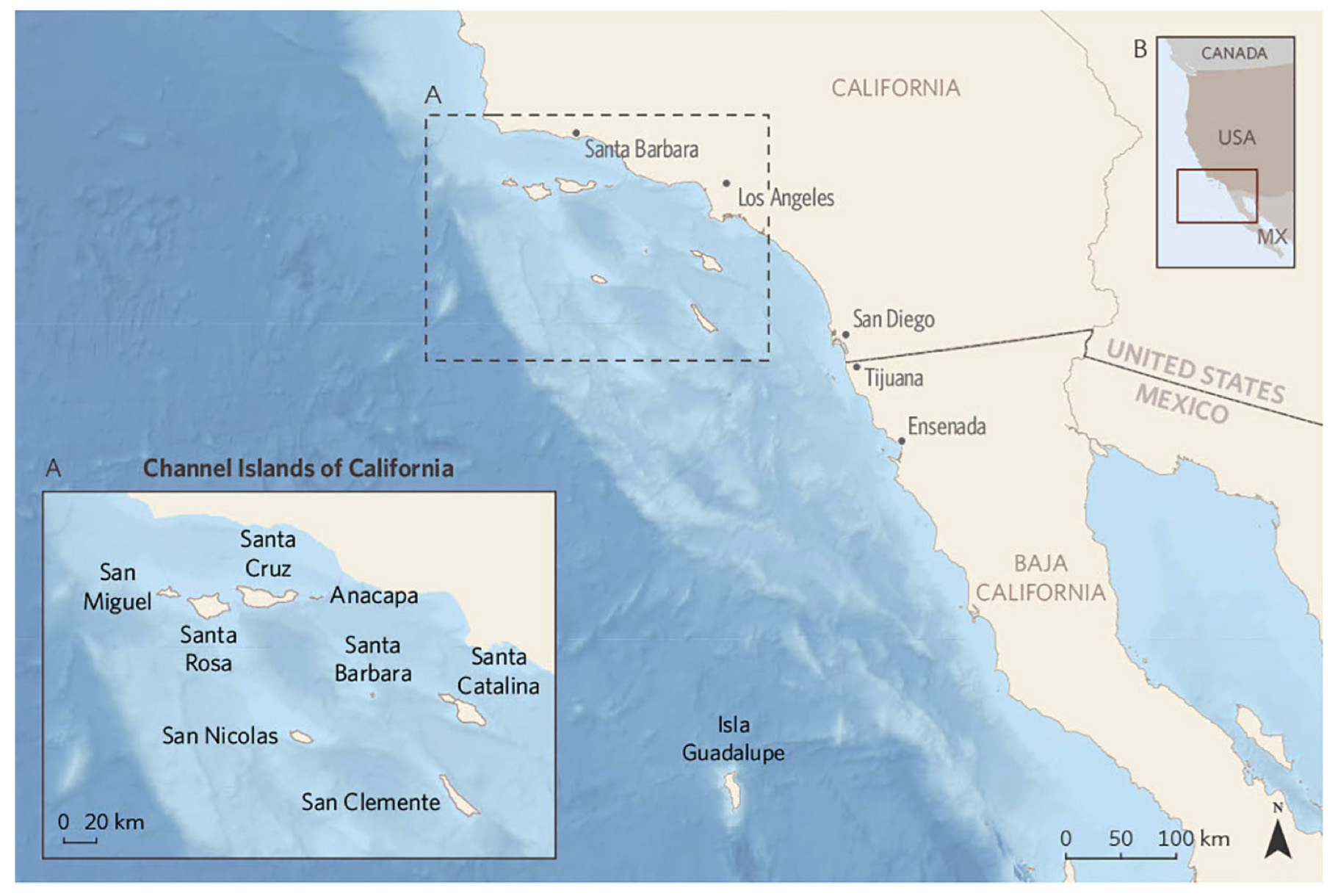 Figure 1 from the paper: Map of the California Channel Islands. The continental shelf is indicated by the blue shading of the bathymetry. Inset B shows the location along the west coast of North America.
Figure 1 from the paper: Map of the California Channel Islands. The continental shelf is indicated by the blue shading of the bathymetry. Inset B shows the location along the west coast of North America.
Eric VanderWerf (Pacific Rim Conservation, Hawaii, United States) and colleagues have published in the journal Frontiers in Conservation Science an assessment on the feasibility of the Channel Islands, located off the coast of California, as a future site for establishing breeding colonies of Laysan and Black-footed Albatrosses.
The paper’s abstract follows:
“Laysan (Phoebastria immutabilis) and Black-footed Albatrosses (P. nigripes) nest primarily on low-lying atolls in the Northwestern Hawaiian Islands that are threatened by inundation from sea level rise and increasing storm surge associated with climate change. Restoration or creation of breeding colonies on higher islands is among the highest priority conservation actions for these species. A previous structured decision-making analysis identified the California Channel Islands as a possible restoration site for Black-footed Albatross. The California Current is part of the natural foraging ranges of Laysan and Black- footed albatrosses. Archaeological evidence indicates both species were present in the California Channel Islands prehistorically, yet neither currently nests in the Channel Islands. We assessed the feasibility of creating albatross breeding colonies in the Channel Islands using social attraction and translocation, and the suitability of each island. We used a risk analysis framework developed for the U.S. National Park Service to evaluate the potential ecological risks of this action. Creating an albatross colony in the Channel Islands is feasible using available methods. Santa Barbara and San Nicolas islands would be most suitable for albatross. Social attraction is less expensive and might be effective for creating a Laysan Albatross colony because that species is already visiting some islands. Translocation would be necessary to create a Black-footed Albatross colony. The risks associated with attempting to establish albatross breeding colonies in the Channel Islands were deemed to be generally low, but the risk of no action is high to these albatrosses. This can be a useful assisted colonization case study that can inform decisions by land managers and agencies regarding conservation of North Pacific albatrosses and other species.”
Reference:
VanderWerf, E.A., Holmes N.D., Morrison S.A., Kohley C.R., Wegmann A. and Young L.C. (2024). Assisted colonization of albatrosses in the California Channel Islands: conservation basis and suitability assessment. Front. Conserv. Sci. 4:1279373. doi: 10.3389/fcosc.2023.1279373
9 February 2024

 Español
Español  English
English  Français
Français